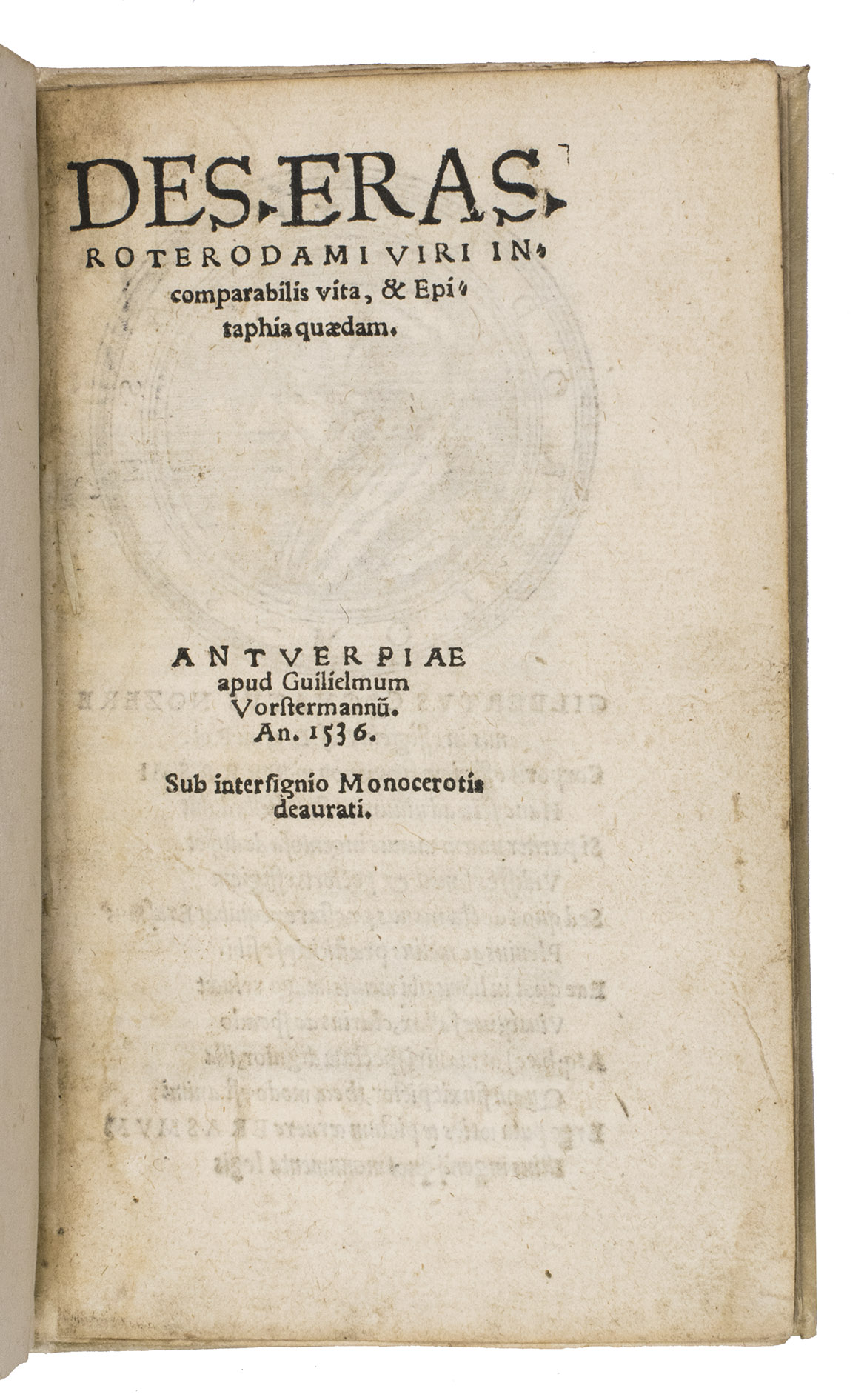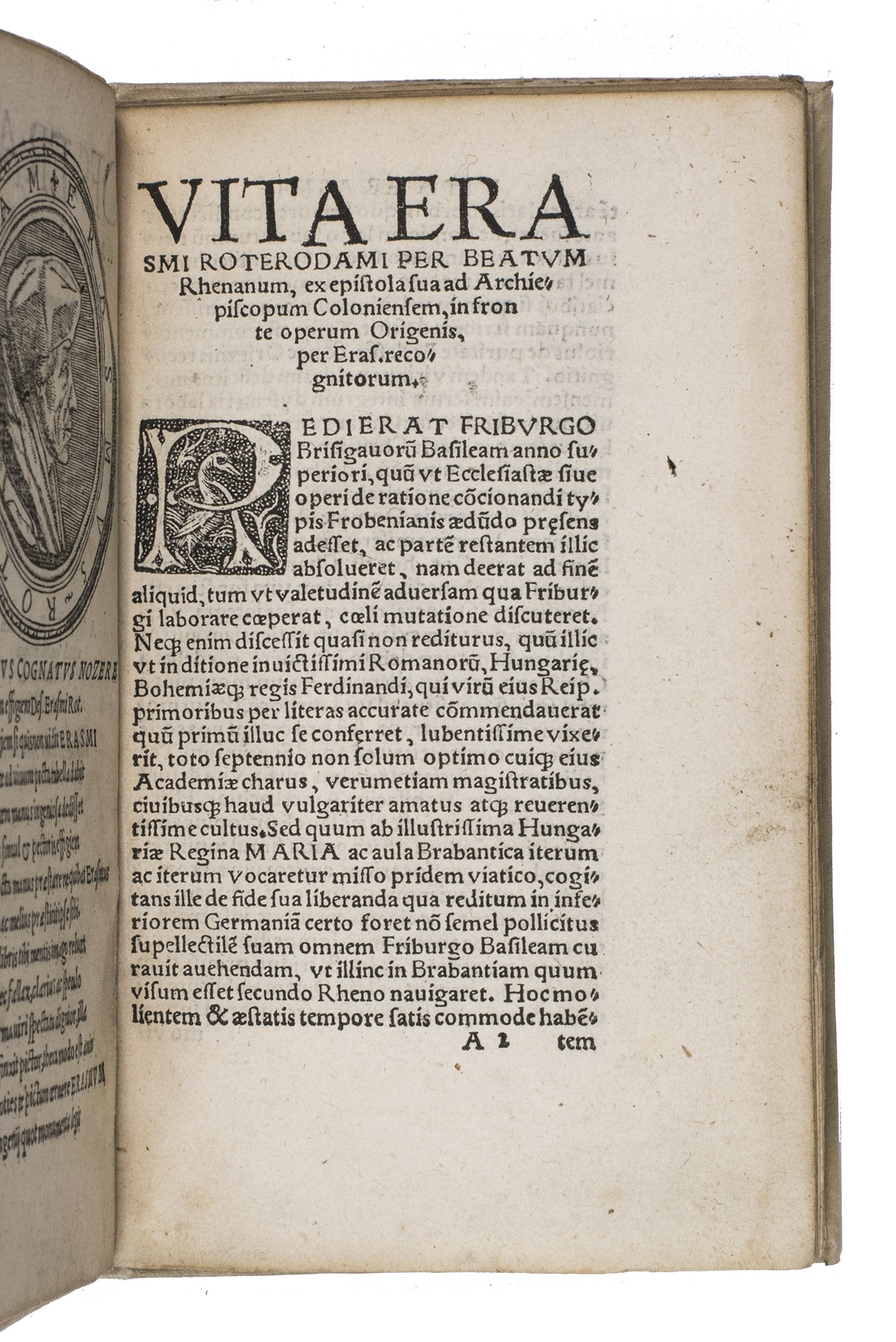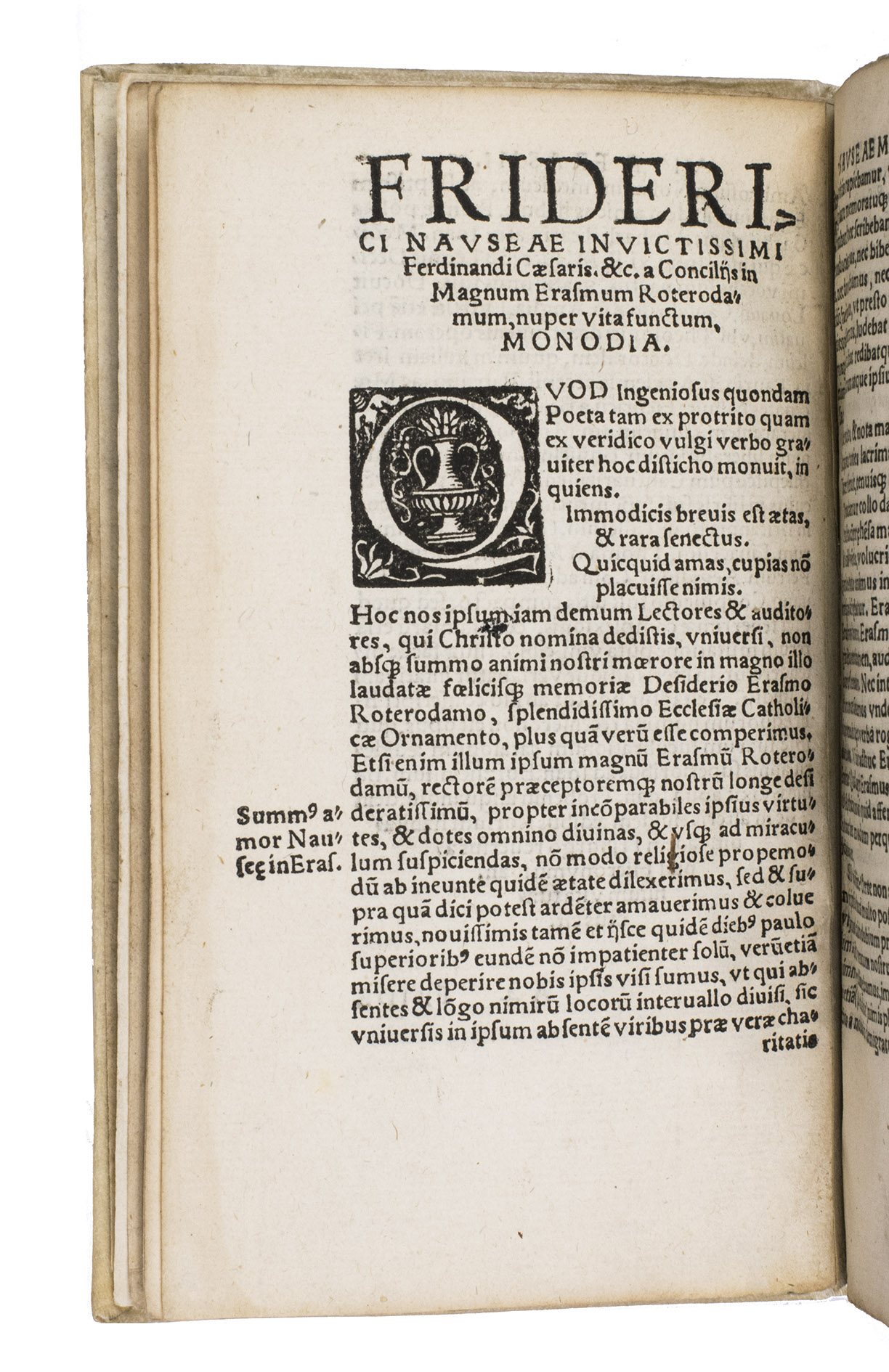RHENANUS, Beatus.
Des. Eras Roterodami viri incomparabilis vita, & epitaphia quaedam.
Antwerp, Willem Vorsterman, 1536. Small 8vo (9.8 x 15.6 cm). With woodcut medallion portrait of Erasmus on the verso of the title page, and 4 woodcut decorated initials. Modern vellum. [24] ll.
€ 3,750
First and only edition of this commemorative work, published shortly after Erasmus death in 1536, brings together a series of biographical and poetic tributes by some of his closest associates. The volume opens with the Vita Erasmi by Beatus Rhenanus (1485-1547), a humanist scholar and one of Erasmus most trusted friends. Rhenanus had lived and worked with Erasmus in Basel and was responsible for editing several of his works, including the Epistolae. His Vita is based on first-hand knowledge and provides a concise and authoritative account of Erasmus life and character.
The Vita Antwerp edition of 1536 derives from the text that appeared earlier that year as a prefatory notice to Erasmus edition of Origenes (Basel, Officina Frobeniana). This Antwerp printing constitutes one of the earliest printed memorials to Erasmus. The work was later revised and incorporated as the introduction to the Basel Opera omnia (1538-1540).
Before the Vita begins, there is a woodcut portrait of Erasmus accompanied by an epigram by Gilbert Cousin (Cognatus, 1506-1572), one of his former pupils. In his verses, Cognatus remarks that the artist of the portrait has faithfully captured Erasmus outward appearance, but that his true likeness, the brilliance of his mind and spirit, can only be seen in his writings. Each of Erasmus books, he suggests, presents a truer and more enduring portrait than any painted image.
Following Rhenanus biography is Friedrich Nauseas (1496-1552) In magnum Erasmum Roterodamum, nuper vita sunctum, monodia, a lengthy poetic lament written in memory of Erasmus and occupying the greater part of the volume. At the end, several epitaphs by Nausea, Cornelius Grapheus (1482-1558), and multiple others, together with Erasmus own In mortem Thomae Mori, heroica monodia, his elegy on the death of Sir Thomas More (1478-1535), can be found.
The work is slightly browned throughout and with marginal water stains, the title page has been reinforced in the gutter. Otherwise in very good condition. De Reuck 615; Enekel, "A blueprint for the reception of Erasmus: Beatus Rhenanuss second Vita Erasmi (1540)", In The Reception of Erasmus in the Early Modern Period (2013), pp. 23-40, see pp. 25-26; Nijhoff-Kronenberg 873; STCV :12924374 (1 copy); USTC 437833 (11 copies); Vander Haeghen III, 50.
Related Subjects:






